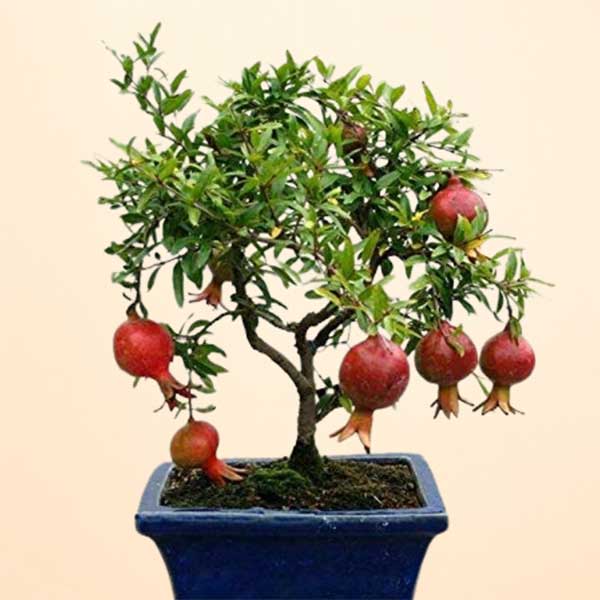بونزاي رمان
بونزاي رمان
Couldn't load pickup availability
Punica granatum bonsai
Growing a Punica granatum (pomegranate) bonsai can be a rewarding and artistic endeavor. Here’s a general guide on how to grow and shape a Punica granatum bonsai:
Materials You’ll Need:
• Punica granatum plant (young pomegranate tree)
• Suitable container or bonsai pot with drainage holes
• Well-draining bonsai soil mix (typically a blend of Akadama, pumice, and lava rock)
• Pruning shears
• Wire (for shaping)
• Fertilizer for bonsai
• Watering can or mister
Steps:
1. Selecting a Young Tree: Choose a young Punica granatum plant with a straight, well-shaped trunk and healthy branches. This will serve as the foundation for your bonsai.
2. Pot Selection: Select a bonsai pot or container that suits the style you want to create. Make sure it has drainage holes to prevent waterlogging.
3. Pruning: Prune the branches and foliage to create the desired bonsai shape. Start with major cuts and then refine the design over time. Be patient and make small, thoughtful adjustments.
4. Repotting: Repot your Punica granatum bonsai every 2-3 years, typically during the spring. Trim the roots and place the tree in fresh bonsai soil.
5. Soil Mix: Use a well-draining bonsai soil mix to ensure good aeration and drainage. Bonsai soil is crucial for maintaining healthy root development.
6. Watering: Water your bonsai when the top layer of soil feels slightly dry. Avoid letting it dry out completely or keeping the soil overly wet. Bonsai pots typically require more frequent watering than traditional pots.
7. Fertilization: Use a balanced bonsai fertilizer during the growing season (spring and summer). Reduce or stop fertilizing during the dormant season (fall and winter).
8. Training and Shaping: Use wire to gently shape the branches and trunk. Be careful not to bend them too harshly, as pomegranate branches can be brittle. Regularly check the wires to ensure they don’t cut into the bark.
9. Sunlight: Place your Punica granatum bonsai in a location where it receives full sunlight for most of the day. Pomegranates thrive in bright, direct sunlight.
10. Protection from Frost: Pomegranates are not frost-resistant. If you live in an area with cold winters, protect your bonsai from freezing temperatures.
11. Pest and Disease Management: Monitor your bonsai for pests or diseases. Common issues include aphids, mealybugs, and fungal diseases. Treat any problems promptly.
12. Pruning of Fruits (Optional): If your Punica granatum bonsai produces fruit, you can prune some of them to maintain the bonsai’s aesthetics. This also helps redirect the tree’s energy into growth and shaping.
Creating a Punica granatum bonsai is an art form that requires patience and attention to detail. Remember that bonsai development is an ongoing process, and the tree’s appearance will evolve with time.
Share



